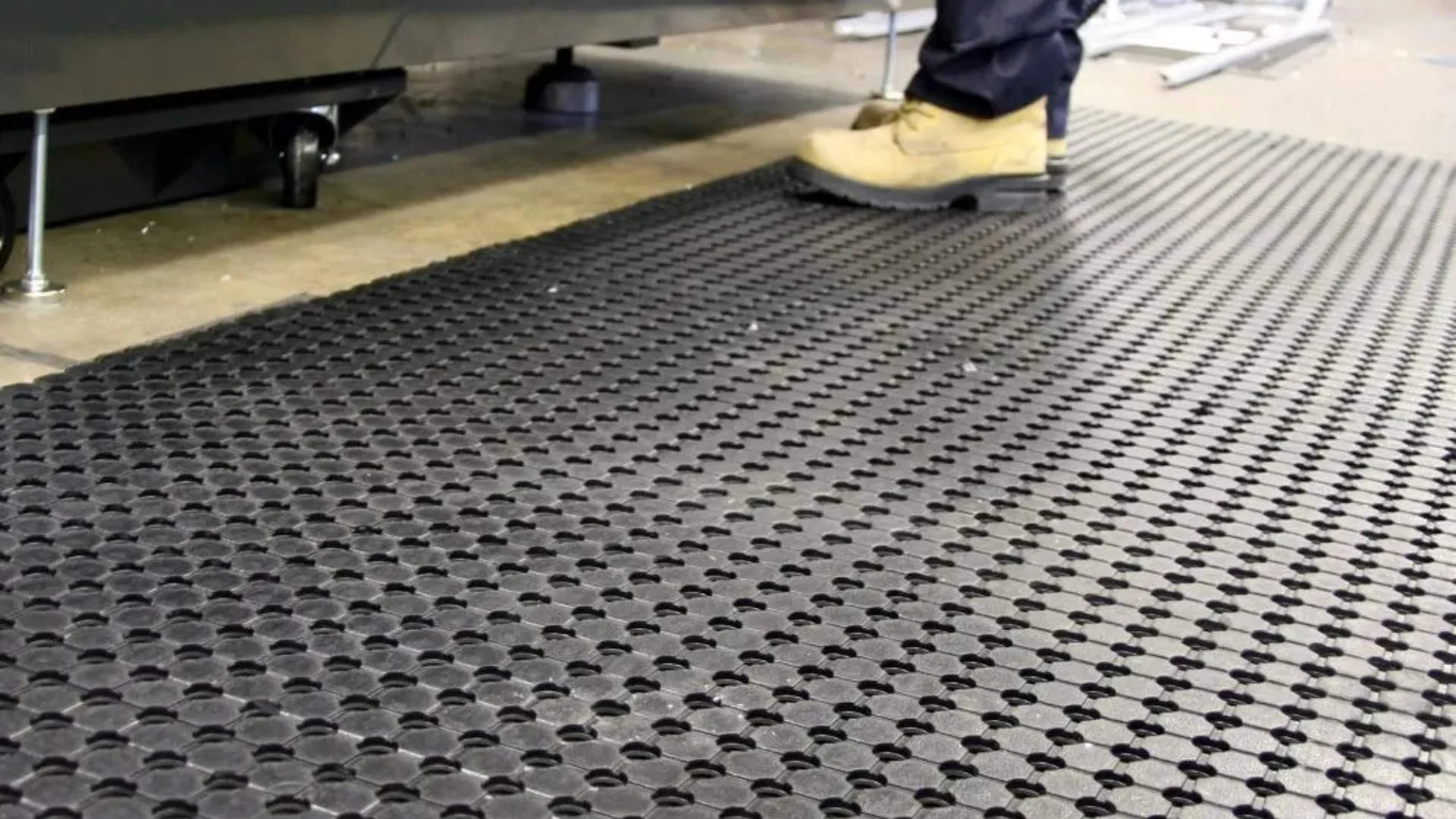Wet area floor mats are essential for maintaining safety and cleanliness in areas prone to moisture. These mats are designed to handle spills, splashes, and high humidity, making them a practical choice for various spaces in your home. Whether you’re dealing with a wet bathroom floor, a slippery kitchen surface, or a damp laundry room, these mats can provide added traction and comfort. In this guide, we’ll explore what wet area floor mats are, their benefits, and how to choose the right one for your needs.
What Are Wet Area Floor Mats?
Wet area floor mats are specialized mats designed to handle moisture and prevent accidents in areas where water or other liquids are common. They are often made from materials that are resistant to water damage and provide a non-slip surface to reduce the risk of slipping.
Definition and Purpose
The primary purpose of wet area floor mats is to create a safer environment by providing a textured surface that enhances grip. They also help in absorbing water, which can reduce the risk of falls and keep floors dry. These mats are particularly useful in areas where water accumulates, such as bathrooms, kitchens, and laundry rooms.
Common Types of Wet Area Floor Mats
Wet area floor mats come in various types, each designed to address specific needs. Some common types include rubber mats, which are durable and offer excellent slip resistance; vinyl mats, which are easy to clean and resistant to moisture; and microfiber mats, which are highly absorbent and quick-drying. Each type has its unique benefits, making it important to choose based on your specific requirements.
Benefits of Using Wet Area Floor Mats
Using wet area floor mats offers numerous benefits that go beyond just preventing slips. They play a crucial role in maintaining a clean and safe environment.
Safety and Slip Resistance
One of the most significant benefits of wet area floor mats is their ability to enhance safety. These mats are designed with textures or patterns that improve grip and reduce the risk of slipping, which is particularly important in wet conditions. By preventing slips and falls, they can help avoid injuries and accidents in high-moisture areas.
Durability and Maintenance
Wet area floor mats are built to withstand harsh conditions. Materials like rubber and vinyl are resistant to water damage, mold, and mildew, ensuring the mats remain effective and long-lasting. Additionally, they are easy to maintain; regular cleaning involves simple methods like wiping or hosing them down, making them a practical choice for busy households.
Comfort and Hygiene
Comfort is another key benefit of these mats. They provide cushioning underfoot, which can be especially beneficial when standing for long periods. Additionally, many wet area floor mats are designed with antimicrobial properties that help to reduce the growth of bacteria and mold, contributing to a more hygienic environment.
Where to Use Wet Area Floor Mats
Wet area floor mats are versatile and can be used in various locations throughout your home where moisture is a concern. Here’s where they are most effective:
Bathrooms
Bathrooms are perhaps the most obvious place for wet area floor mats. Water from showers and sinks can make bathroom floors slippery, so using mats here can prevent accidents. Mats designed for bathrooms are often made from materials that are resistant to water and mold, ensuring they stay clean and effective.
Kitchens
In the kitchen, spills and splashes are common. Wet area floor mats can help keep the floor dry and provide a safer surface to walk on. They also make cleanup easier by absorbing liquids and reducing the spread of messes.
Laundry Rooms
Laundry rooms are another area where wet area floor mats are beneficial. Washing machines and sinks can cause water to accumulate on the floor, creating a slip hazard. Mats in these areas help to keep the floor dry and can protect against water damage.
Outdoor Areas
Wet area floor mats are not limited to indoor use. They can also be used in outdoor areas like patios and entry
ways, where they help manage moisture and dirt. Outdoor mats are often made from weather-resistant materials that can endure exposure to the elements, ensuring they remain functional and effective.
How to Choose the Right Wet Area Floor Mat
Selecting the right wet area floor mat involves considering various factors to ensure it meets your needs effectively. Here’s what to look for:
Material Options
The material of a wet area floor mat determines its durability and functionality. Rubber mats are excellent for slip resistance and durability, making them ideal for high-traffic areas. Vinyl mats are easy to clean and are resistant to water, making them a good choice for both indoor and outdoor use. Microfiber mats are highly absorbent and dry quickly, which is useful for high-moisture areas like bathrooms.
Size and Shape Considerations
Choosing the right size and shape of a mat is crucial for proper coverage and functionality. Measure the area where the mat will be placed to ensure it fits well and covers the necessary space. Mats come in various shapes, including rectangular, square, and circular, so select a shape that complements the area and fits seamlessly with the layout of the room.
Features to Look For
When selecting a wet area floor mat, consider features like drainage capabilities and antimicrobial properties. Mats with drainage holes or channels help water flow through, reducing the risk of mold and mildew buildup. Antimicrobial properties can inhibit the growth of bacteria and fungi, contributing to a healthier environment. Also, consider mats with beveled edges to prevent tripping hazards.
How to Maintain and Clean Wet Area Floor Mats
Proper maintenance and cleaning are essential to keep wet area floor mats in good condition and ensure their longevity. Follow these tips to maintain their effectiveness:
Regular Cleaning Tips
Regular cleaning helps prevent the buildup of dirt, grime, and mold. For most mats, simple cleaning methods include sweeping or vacuuming to remove loose debris, followed by wiping with a damp cloth or sponge. Some mats can be hosed down or washed with mild soap and water, depending on the material. Always refer to the manufacturer’s instructions for specific cleaning recommendations.
Handling Stains and Odors
For stains and odors, spot-cleaning is often effective. Use a mild detergent and a soft brush to scrub stained areas. For persistent odors, consider using a mixture of vinegar and water to neutralize smells. Ensure the mat is thoroughly dried after cleaning to prevent mold growth.
Proper Storage Techniques
When not in use, store wet area floor mats in a dry, well-ventilated area to prevent dampness. Avoid folding or creasing the mats excessively, as this can damage the material and affect its functionality. If storing mats for an extended period, clean them thoroughly and allow them to dry completely before putting them away.
Top Wet Area Floor Mats on the Market
Several high-quality wet area floor mats are available, each with unique features to suit different needs. Here’s a look at some popular options:
Brief Reviews of Popular Brands
- Rubber-Cal Elephant Bark Mat: Known for its durability and excellent slip resistance, this mat is ideal for high-traffic areas. Its rubber material is resistant to water and easy to clean.
- Kangaroo Original Standing Mat: This mat offers superior comfort and support, making it perfect for areas where you stand for long periods. Its antimicrobial properties help keep it hygienic.
- WaterHog Doormat: Designed for both indoor and outdoor use, this mat features a unique water-dam border that traps moisture and debris, keeping floors clean and dry.
Key Features and Benefits of Each
- Rubber-Cal Elephant Bark Mat: Offers robust slip resistance and durability, making it suitable for industrial and residential use.
- Kangaroo Original Standing Mat: Provides exceptional cushioning and comfort, with added benefits of antimicrobial protection for a healthier environment.
- WaterHog Doormat: Combines excellent moisture trapping with durability, making it a versatile choice for various settings.
Conclusion
Wet area floor mats are a practical and essential addition to any home where moisture is a concern. They enhance safety, improve comfort, and contribute to a cleaner environment. By choosing the right mat and maintaining it properly, you can ensure it provides long-lasting benefits in areas prone to spills and moisture. Remember to consider material, size, features, and maintenance needs when selecting a mat to ensure it meets your specific requirements.



